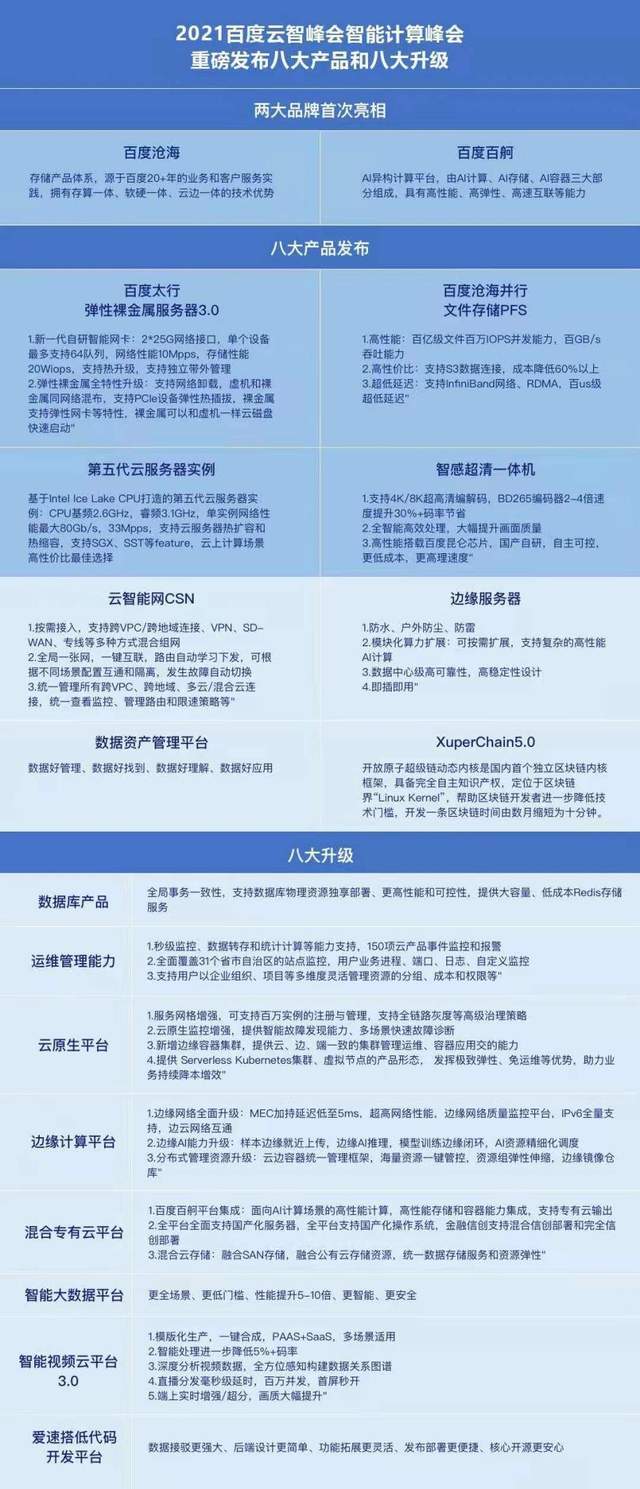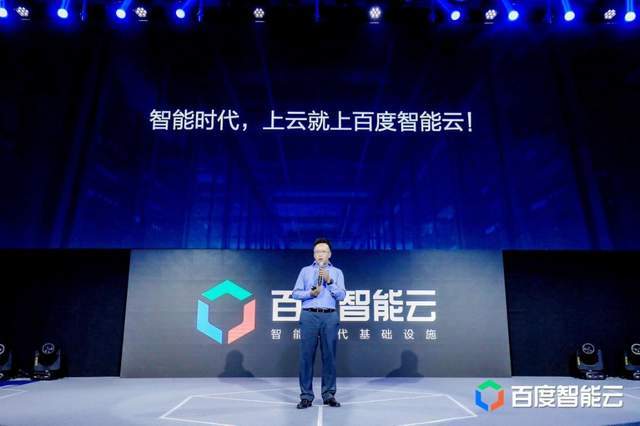The relationship between cloud computing and AI has undergone several changes in the past few years.
In the beginning, the provision of AI services based on cloud computing was only a direction and trend, and the delivery capacity was dominated by basic algorithms. Subsequently, cloud computing began to provide systematic AI training, development, deployment and application services. The close relationship between cloud and AI is closer, which can meet the complex and intelligent needs of enterprises.
So, what is the next step for cloud and AI?
According to industry expectations and technological development trends, the next step of “cloud + AI” should move towards tight infrastructure coupling. Both development and application requirements can be fully met, and various intelligent requirements can be fully released in the cloud computing system. New form. At this stage, AI is no longer an “embedded object of cloud computing, but is presented to users and developers with AI-native cloud, and the industrial characteristics of cloud and intelligence are highly integrated.
In the traditional Chinese painting Danqing, what we can see is not a mountain, a stone, a grass and a tree, but a vast array of mountains and rivers. The cloud computing system that truly meets the needs of industry intelligence and meets the needs of industrial-grade AI should also be a long scroll composed of many leading technologies, core capabilities and service systems. In Baidu Smart Cloud’s view, this long scroll should be called “AI Native Cloud”.
In October last year, Baidu Smart Cloud put forward the industry judgment and industry vision of “AI Native Cloud” for the first time. After experiencing fast-paced development, at the Intelligent Computing Summit of Baidu Cloud Intelligence Summit on June 3, we can see that the components of AI native cloud have been very rich, and the core products have been full and perfect. Not only did the two new brands of Baidu Canghai Storage Technology and Baidu Baige AI Heterogeneous Computing Platform debut for the first time, Baidu Smart Cloud also released and upgraded a series of products, and finally formed a picture of a thousand miles of rivers and mountains entitled “AI Native Cloud”.

(June 3, 2021 Baidu Intelligent Computing Summit, Baidu Intelligent Cloud deploys a series of AI native cloud products)
Asked the group pen: the era picture of AI native cloud
We discussed a long time ago that the convergence of cloud computing and AI is inevitable in terms of industrial location. Because the elastic feature of cloud computing is the best way to deliver intelligence, and perhaps intelligence through cloud computing is also the lowest threshold and most efficient access method for enterprises.
Today, AI has become the industrial focus of every cloud computing vendor. After the establishment of the “cloud + AI” direction, the next question is how to make enterprise users and developers more simple, efficient, and low-cost access to AI and load industrial-grade applications. If the cloud computing manufacturer is a painter, and AI is the object they are describing together, then the first step is to determine how to draw the most exciting AI. This is the quest of the “cloud painter”.
Overall, AI poses three major challenges to the cloud computing system:
The first is that the training, deployment and application of AI have brought high-intensity and complex heterogeneous computing requirements, which have greatly changed the traditional cloud computing power provision rules and server characteristics.
Secondly, AI has to be deployed in enterprises and needs to be deployed in multiple scenarios such as cloud, edge, and end. This has created a dazzling demand for distributed computing, which in turn has led to an extreme increase in the types of platforms and services that cloud vendors need to provide.
Another point is that companies’ expectations for AI cost reduction and difficulty reduction are always the same. How to meet the diversified development and application needs of enterprises, reduce the cost of computing power and reduce the difficulty of algorithms, is also the direction of cloud vendors.
Combining these three AI methods, “Cloud Painter” needs to reorganize the brushwork, compile an industrial blueprint, and draw technological differentiation. Baidu Smart Cloud is a highly heterogeneous, multi-terminal deployment, and easy-to-use “cloud-intelligence” cloud computing architecture, which is defined as “AI native cloud”.
Hou Zhenyu, Vice President of Baidu Group, believes that: “AI native cloud is the core driving force to promote the intelligent upgrade of enterprises. AI native cloud provides flexible and high-performance heterogeneous computing power for AI scenarios at the computing power level. At the application development level, it provides A series of low-threshold development platforms for AI application scenarios help companies make AI application architecture more concise and more agile.”

Danqing ink and wash emphasizes that mountains are bones and water is soul. Baidu Smart Cloud believes that the foundation of AI native cloud is the diversified integration of computing power and application development platforms. The integration of computing power, data, development, and application platforms can draw the ink-splashing scroll of the intelligent era.
Aiming at the three core capabilities that AI native cloud must have, namely AI heterogeneous computing platform, distributed cloud infrastructure, and AI application development platform, Baidu Cloud Intelligence Summit Intelligent Computing Summit released and upgraded eight new products at one time, including Baidu Taihang Elastic Bare Metal Server 3.0, Baidu Canghai Parallel File Storage PFS, the fifth-generation cloud server instance, intelligent sense ultra-clear all-in-one machine, etc.
These fully upgraded AI infrastructures, like brushstrokes, form a landscape of computing and intelligence.
Majestic building Taihang, cloud sailing to the sea
In the picture of AI native cloud, the first thing we need is computing power and storage as the foundation.
Adapting to the needs of AI, abundant low-cost computing power, and data storage capabilities closely related to computing are the foundation of AI development. Just like the mountain in ink painting, it forms the skeleton and outline of the whole painting, and determines the trend of Danqing.
In the AI native cloud provided by Baidu Smart Cloud, computing power is also closely connected with the “mountain”. Baidu Smart Cloud released a new generation of cloud infrastructure “Taihang”, based on Baidu’s self-developed hardware virtualization technology, reconstructs Baidu Smart Cloud’s computing power infrastructure, and has the resource flexibility of cloud servers and the high-performance experience of physical machines. To meet the demand for massive computing power in the AI native era.
In response to more specific demands for AI computing power, Baidu Smart Cloud released Baidu Taihang Flexible Bare Metal Server 3.0. Taihang has fully upgraded the full features of flexible bare metal to support network offloading and hot swap of PCIe devices, so that bare metal can be quickly booted from cloud disks like virtual machines. Based on the new generation of self-developed smart network cards, Taihang can also realize the unification of the computing power of bare metal, virtual machines, and containers on the network and storage, fully matching the computing requirements of AI tasks.

If computing power is a mountain, then the storage, calling, and enabling of data is the water that allows the mountains to flow, and computing power generates value. In order to meet the increasing demands of users for high-performance computing when applying AI, Baidu Smart Cloud released the storage brand Canghai.
We know that data is Baidu’s core advantage, and the storage, calculation, and use of data are necessarily technical capabilities that Baidu must continue to strengthen. In the storage field, Canghai originated from Baidu’s business and customer service practices for more than 20 years. It has the technical advantages of integration of storage and computing, integration of software and hardware, and integration of cloud and edge; it has the ultimate speed, ultimate flexibility, ultimate price-performance ratio, ultimate reliability, and ultimate simplicity. Technical characteristics.
Facing the intelligent era, high performance and massive storage have become the key support for enterprises to go to the cloud and deploy AI. And Canghai can solve the core storage problem from several aspects. The first is to upload data to the cloud, which provides offline and online data to the cloud; the second is to solve the problem of data storage, and proposes the ability to use object storage as the core to make high-speed optimization for AI scenarios; the third is for AI scenarios, AI-oriented The ability to train and process analysis.
Taking the distributed storage scenario as an example, the newly released Canghai Parallel File Storage PFS can support object storage data connection, realizing the real connection of hot and cold data, and reducing the overall data cost by more than 60%. And Canghai also covers the performance requirements of HPC scenarios, with the key features of ultra-high performance and ultra-low latency.
Let the ocean of data and the Taihang of computing surround each other, forming an unbreakable computing power and data base with a long history.

(Photo: Lin Dekun Chinese Painting-Clouds around Taihang)
Under the Kunlun Mountains, Baige Flying Paddle
Computing power and storage are the engines of AI native cloud, and development is the operating system of AI native cloud. Allowing users and developers to complete AI development and applications with low cost, high efficiency and low difficulty is an eternal proposition since the rise of AI, and it is also the key to Baidu’s ability to build a moat in the AI field.
With computing power and storage as the mountain and ocean foundation of AI’s native cloud, the development platform becomes the smart “boat” in this picture. Based on the development system, it can match the individual needs of developers in various industries, or face industrial-level challenges, or complete unexpected subtle creations; it must not only dance with experts and scholars in the laboratory, but also help developers who have no code experience.者工作。 The work.
In the cloud computing scenario, heterogeneous computing is the biggest challenge for a large number of enterprises to apply AI. In order to further help users lower the threshold of AI development and complete the industrial-grade AI landing, Baidu Smart Cloud has launched a new AI heterogeneous computing platform Baige, in order to “compete with each other and strive for the first.” Baidu Baige is composed of three parts: AI computing, AI storage, and AI container. It can complete different computing freedoms, storage resources, and container applications with flexible and efficient interconnection for different AI application scenarios, helping users effectively utilize AI infrastructure.

At the AI computing level, we have to mention Baidu Kunlun, a cloud AI chip independently developed by Baidu, and Baidu’s super AI computing platform X-MAN, which is optimized for AI deep learning scenarios.
As the core basic computing unit, the chip occupies the commanding heights of the AI era. Baidu’s demand for AI chips is very clear. As early as 2010, Baidu had used FPGAs for the research and development of AI architecture, and then continued to promote the business through cooperation, investment and self-research. In 2018, Baidu released the cloud AI chip “Kunlun” independently developed by Baidu.
In 2020, Kunlun 1 will achieve mass production, with key features such as high performance, low cost, high flexibility, and autonomous controllability, and it will be widely deployed in scenarios such as Baidu search engine and Baidu intelligent cloud ecosystem partners. The Kunlun chip can do both training and inference. It can meet the high processing needs of AI and is used in cloud instances and edge instances, including data centers, public clouds, and autonomous vehicles.
By making full use of the extreme push computing power and power efficiency of the Kunlun chip, Baige AI heterogeneous computing platform can effectively support a variety of functions, including large-scale artificial intelligence workloads, such as search ranking, voice recognition, image processing, and natural language Processing, automatic driving. Another key advantage of Kunlun lies in its perfect adaptation to many AI software and hardware systems, which can help users and developers effectively utilize AI computing power and maximize Baidu’s AI infrastructure. The Baidu Kunlun cloud server based on Kunlun chips can provide enterprises and developers with super AI reasoning and training performance, and accelerate the pace of deep integration of AI technology with all walks of life.
At present, Baidu’s super computing platform X-MAN has been upgraded to the fourth generation. It is the industry’s first super AI computing platform that supports OAI standards and liquid cooling. It can solve the three major issues of CPU+GPU ratio computing, communication bandwidth bottlenecks, and high-performance storage. problem. Baidu’s X-MAN super AI computing platform provides extreme computing performance, supports large and complex algorithm models, and can process massive amounts of data quickly and in time. Since its birth, Baidu’s X-MAN super AI computing platform has undergone three generations of development, three architecture upgrades, and has created six industry firsts. At the same time, it has maintained its leading technology and performance, leading the industry development trend. At present, the X-MAN series of products have been applied on a large scale in Baidu, which is helping Baidu’s AI strategy to be implemented quickly.
If you want to be a better player in the competition, you must naturally have a pair of powerful oars. Baidu Flying Paddle is China’s first industry-level deep learning platform with open source, leading technology, and complete functions. The Song Dynasty literati Zhu Xi’s “Flying paddles, go to Guangjin”. At present, flying paddles have been implemented in a large number of industries and are known as the operating system of the intelligent age. Not long ago, Feida just ushered in a full platform upgrade and new release. The new release includes Feida core framework V2.1, large-scale map retrieval engine, Wenxin ERNIE four pre-training models, reasoning deployment navigation map, hardware ecological progress , Open the cloud-native machine learning core PaddleFlow, and fully launch the flying paddle “Grand Navigation” plan, with a total investment of 1.5 billion yuan, focusing on ecological development.
From flying paddle to Baige, the development platform and application platform under Baidu’s AI system are being fully improved step by step to meet the AI landing in different scenarios from basic development, simple development, and industrial applications. Many scientists have imagined that the application of AI in the future should be a natural matter, without learning thresholds.

The AI native cloud is making the vision of artificial intelligence application development gradually fall into reality. What’s more worth mentioning is that Baidu Baige, Baidu Kunlun, and Baidu Feida have allowed China to have independent intellectual property rights in the core underlying technology of AI, forming a veritable Chinese AI picture scroll.
Concluding remarks: AI Danqing paints everything
The release and upgrade of the eight major AI native cloud products in one breath shows the determination and determination of Baidu Smart Cloud on the new track of AI native cloud. The root of this strategic determination is that the integration relationship between AI and cloud is a logical and demanding thing.
Countless industries and countless scenarios are using the cloud as a channel and AI as a springboard to upgrade their productivity and make the impossible possible. Their stories and achievements fell into reality bit by bit, and finally painted into a picture of the intelligent age.
For the purpose of AI, the goal of drawing all things, all sectors of the industry still need to run with all their strength, use computing to leverage productivity, and use intelligence to open up industry possibilities.

When the time comes to 2021, Baidu Smart Cloud describes a cloud image that belongs to AI has begun to take shape. However, the next “AI native cloud” brushes will be handed over to users from thousands of industries and developers with unlimited imagination.
In this smart picture scroll, everyone should be a painter.
Behind the names of Taihang, Kunlun, Canghai, Baige, and Feida, we can faintly read a kind of lofty ambition. Baidu Smart Cloud’s ambitious ambition is to enable every company to use the cloud as a pen, wisely make ink, and draw a legend of its own.




























































You must log in to post a comment.